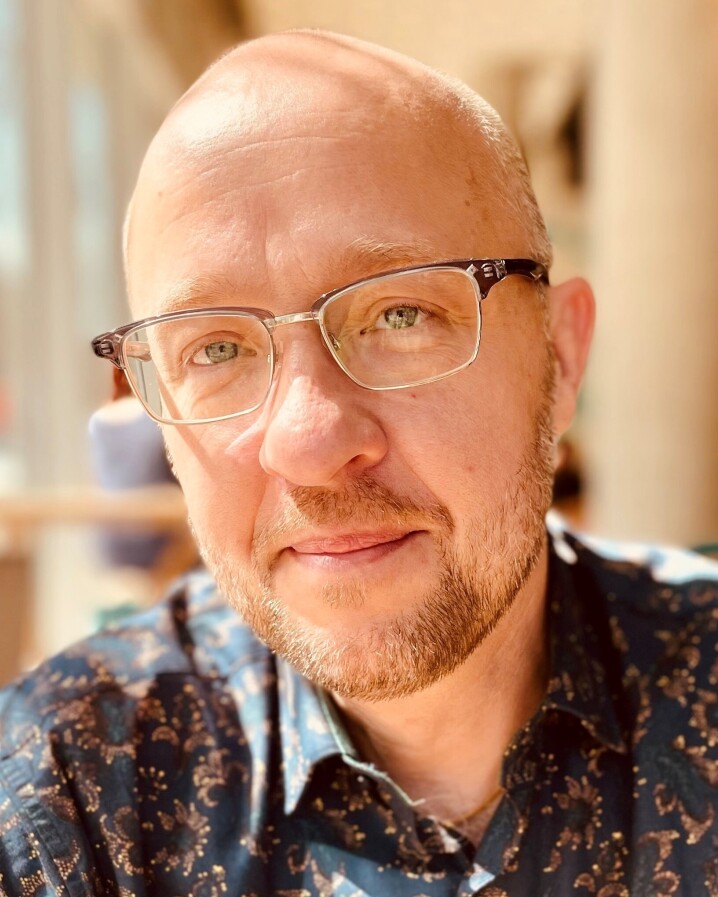
NOW ALSO STREAMING VIA TEAMS!
Click the Livestream button to join.
Centre for Neurotechnology seminar from Jesper Sjöström
Associate Professor, Centre for Research in Neuroscience, Research Institute of the McGill University Health Centre, Department of Neurology and Neurosurgery and Department of Medicine, McGill University
2-Photon Optogenetic Mapping of Neocortical Microcircuits
Abstract: Patterns of connectivity and short-term plasticity govern microcircuit function, but such patterns vary with synapse type. Therefore, understanding microcircuit function requires synapse-specific investigation. However, the current state of the art for synapse-specific measurements has long been paired recordings, which are slow and painstaking. This has led to a long-standing throughput problem. To overcome this key problem, we created optomapping — which is an approximately two orders of magnitude faster method relying on 2-photon optogenetics — which we validated with our paired-recording data. Using optomapping, we tested 15,433 candidate excitatory synaptic inputs to reveal 1,184 connections onto pyramidal, basket, and Martinotti cells in mouse primary visual cortex. We measured synaptic strengths, connectivity, and short-term plasticity across the layers of visual cortex. We found that synaptic weights distributed log-normally, even for individual inhibitory cells. For excitatory cells, we reproduced the canonical circuit, but we surprisingly found differential microcircuit structures for basket cells and Martinotti cells. Excitation of inhibitory cells was denser, stronger, and farther-reaching than excitation of excitatory cells, which may underpin Mexican-hat connectivity. We collected an excitatory short-term plasticitome, which revealed how short-term plasticity simultaneously depends on target cell type and on presynaptic cortical layer. With optomapping, we were additionally able to uncover high-order connectivity patterns such as shared-input overrepresentation for interconnected layer-6 pyramidal cells. Optomapping thus resolved the throughput problem while simultaneously offering fresh insight into the principles that govern neocortical excitatory fine structure.
 Bio: Jesper Sjöström, PhD, is a professor in the Department of Neurology and Neurosurgery and the Department of Medicine at McGill University. He is Acting Leader of the Brain Repair and Integrative Neuroscience (BRaIN) program at the Research Institute of the McGill University Health Centre (RI-MUHC) as well as Director of the Centre for Research in Neuroscience (CRN) at McGill University. He is a recipient of UK MRC Career Development, CIHR New Investigator, FRQS Chercheur-Boursier, and Donald S. Wells Distinguished Scientist awards. His team explores plasticity in the brain using multiple patch-clamp, optogenetics, computer modelling, and custom 2-photon laser-scanning microscopy. His research has unveiled plasticity learning rules, neocortical connectivity patterns, and unorthodox forms of NMDA receptor signalling, which has had implications for Alzheimer disease and epilepsy research. Current and past leadership roles include Chair of the Montreal General Hospital Facility Animal Care Committee, Society for Neuroscience Theme B Chair, and Chief Editor of Frontiers in Synaptic Neuroscience. Dr. Sjöström’s findings and novel ideas have been published in journals such as the Neuron, Nature, Nature Neuroscience, eLife, Frontiers, and Current Opinion in Neurobiology. His work has received support from the European Union, the UK Medical Research Council (MRC), the Canadian Institutes of Health Research (CIHR), Natural Sciences and Engineering Research Council of Canada (NSERC), and the Fonds de recherche du Québec (FRQ).
Bio: Jesper Sjöström, PhD, is a professor in the Department of Neurology and Neurosurgery and the Department of Medicine at McGill University. He is Acting Leader of the Brain Repair and Integrative Neuroscience (BRaIN) program at the Research Institute of the McGill University Health Centre (RI-MUHC) as well as Director of the Centre for Research in Neuroscience (CRN) at McGill University. He is a recipient of UK MRC Career Development, CIHR New Investigator, FRQS Chercheur-Boursier, and Donald S. Wells Distinguished Scientist awards. His team explores plasticity in the brain using multiple patch-clamp, optogenetics, computer modelling, and custom 2-photon laser-scanning microscopy. His research has unveiled plasticity learning rules, neocortical connectivity patterns, and unorthodox forms of NMDA receptor signalling, which has had implications for Alzheimer disease and epilepsy research. Current and past leadership roles include Chair of the Montreal General Hospital Facility Animal Care Committee, Society for Neuroscience Theme B Chair, and Chief Editor of Frontiers in Synaptic Neuroscience. Dr. Sjöström’s findings and novel ideas have been published in journals such as the Neuron, Nature, Nature Neuroscience, eLife, Frontiers, and Current Opinion in Neurobiology. His work has received support from the European Union, the UK Medical Research Council (MRC), the Canadian Institutes of Health Research (CIHR), Natural Sciences and Engineering Research Council of Canada (NSERC), and the Fonds de recherche du Québec (FRQ).
The seminar is in-person. No registration is required.